Top Demand Generation Tools to Boost Leads, Engagement, and Business Growth
Last updated: February 26th, 2025
When it comes to attracting and engaging potential customers, businesses can’t afford to rely on guesswork. Demand generation software captures attention, nurtures high quality leads, and drives meaningful conversions, all while streamlining marketing efforts.
From identifying the right audience to delivering personalized experiences, demand generation tools empower you to build stronger connections with prospects. They’re essential for creating a seamless journey that turns interest into action. Whether you’re a startup or an established brand, leveraging the right tools can make all the difference in staying ahead of the competition.
By understanding what these tools can do and how they fit into your strategies, you can unlock new growth opportunities. This guide will explore how these powerful solutions can transform the way you approach demand generation and fuel your business success.
What is B2B Demand Generation?
Demand generation is a holistic marketing approach that creates and cultivates interest throughout the customer journey. Instead of targeting immediate sales, it focuses on building awareness and establishing trust. Use this strategy to ensure long-term relationships with prospective customers by providing value-driven content and personalized experiences.
A comprehensive demand generation strategy will help you increase market demand, set clear goals, research market gaps, segment target audiences, and create valuable content.
Demand Generation vs. Lead Generation
Demand generation and lead generation differ in scope and objectives. Demand generation creates awareness and interest in a broader pool of potential customers. For example, distributing thought leadership content or hosting webinars educates target audiences.
Lead generation, in contrast, focuses on converting this interest into actionable prospects by collecting information like email addresses through sign-up forms or landing pages. While demand generation builds the foundation, lead generation narrows the focus to drive measurable results by acquiring high quality leads.
Core Components of Demand Generation Tools
Demand generation tools incorporate several key components that increase awareness, engagement, and conversions. These components create a strategic and cohesive approach to generating demand. Customer Relationship Management (CRM) systems play an important role in this process by managing customer interactions, maintaining organized contact information, and automating repetitive tasks, which improve demand generation strategies and boost sales.
Sales & Marketing Alignment
Demand generation tools streamline marketing and sales processes, improving collaboration between marketing and sales teams as they create personalized and targeted campaigns.
Unified data-sharing platforms help both teams access real-time insights about leads. Automation features, like lead scoring and tracking, prioritize high-intent prospects for sales outreach. Tools like HubSpot and Salesforce help campaigns align with sales objectives by centralizing communication and reporting systems. Aligned teams use shared metrics, including conversion rates and pipeline velocity, to measure success and optimize strategies.
Content & Personalization
Content-focused demand generation tools, integral to content marketing, create personalized experiences to engage audiences effectively. Advanced AI algorithms tailor content, such as blog posts or email campaigns, based on user behaviors.
Platforms like Marketo and Pardot enable personalized messaging through dynamic segmentation. Interactive formats, including video and polls, boost engagement and enhance storytelling. These solutions track content performance, refining personalization strategies for higher relevance and stronger customer connections.
Key Demand Generation Tool Concepts
Demand generation tools operate on foundational principles that shape their strategies and determine how effective they are. Understanding these key concepts helps businesses optimize their use and achieve measurable outcomes.
A demand generation tool helps businesses attract and engage their target audiences by improving top-of-the-funnel sales and marketing strategies, using features like automation, integration, and data analytics to streamline the lead generation process and enhance customer journey engagement.
Inbound vs. Outbound Approaches
Inbound marketing strategies focus on attracting potential customers through value-driven content, organic engagement, and interest-based interactions. Blogs, webinars, and SEO-friendly content are common tools in this approach, targeting users actively seeking solutions.
Outbound strategies involve proactive outreach using tools to deliver messages directly to the audience. Email campaigns, paid ads, and cold outreach exemplify outbound methods focused on generating demand among users who may not yet be aware of a brand’s offerings.
Balancing inbound and outbound approaches helps create comprehensive coverage of both active and passive audiences while generating demand.
Measurement & KPIs
Accurate measurement of campaign success relies on clearly defined KPIs. Tools track metrics such as:
- Lead conversion rates
- Marketing-qualified leads (MQLs)
- Cost-per-lead (CPL)
- Website traffic
- Engagement levels
For instance, platforms like Google Analytics provide insights into traffic sources, while CRMs like HubSpot monitor MQL progression.
It’s essential to align KPIs with your objectives. For example, higher engagement metrics are critical for awareness campaigns, while CPL and ROI take precedence for paid strategies. By consistently evaluating performance data, you can refine your efforts for maximum impact.
Top Demand Generation Tools & Categories
Selecting the right demand generation tools helps businesses attract, engage, and convert audiences effectively. B2B demand generation is crucial as it involves strategies and tools that help businesses create demand for their products or services, such as promoting free tools, using customer case studies, and providing a range of tools for different business stages.
Here are the top tools you can use to address your demand generation needs, organized by type.
Interactive Demo & Product Experience
Providing engaging demos offers prospects an immersive understanding of products or services.
Storylane
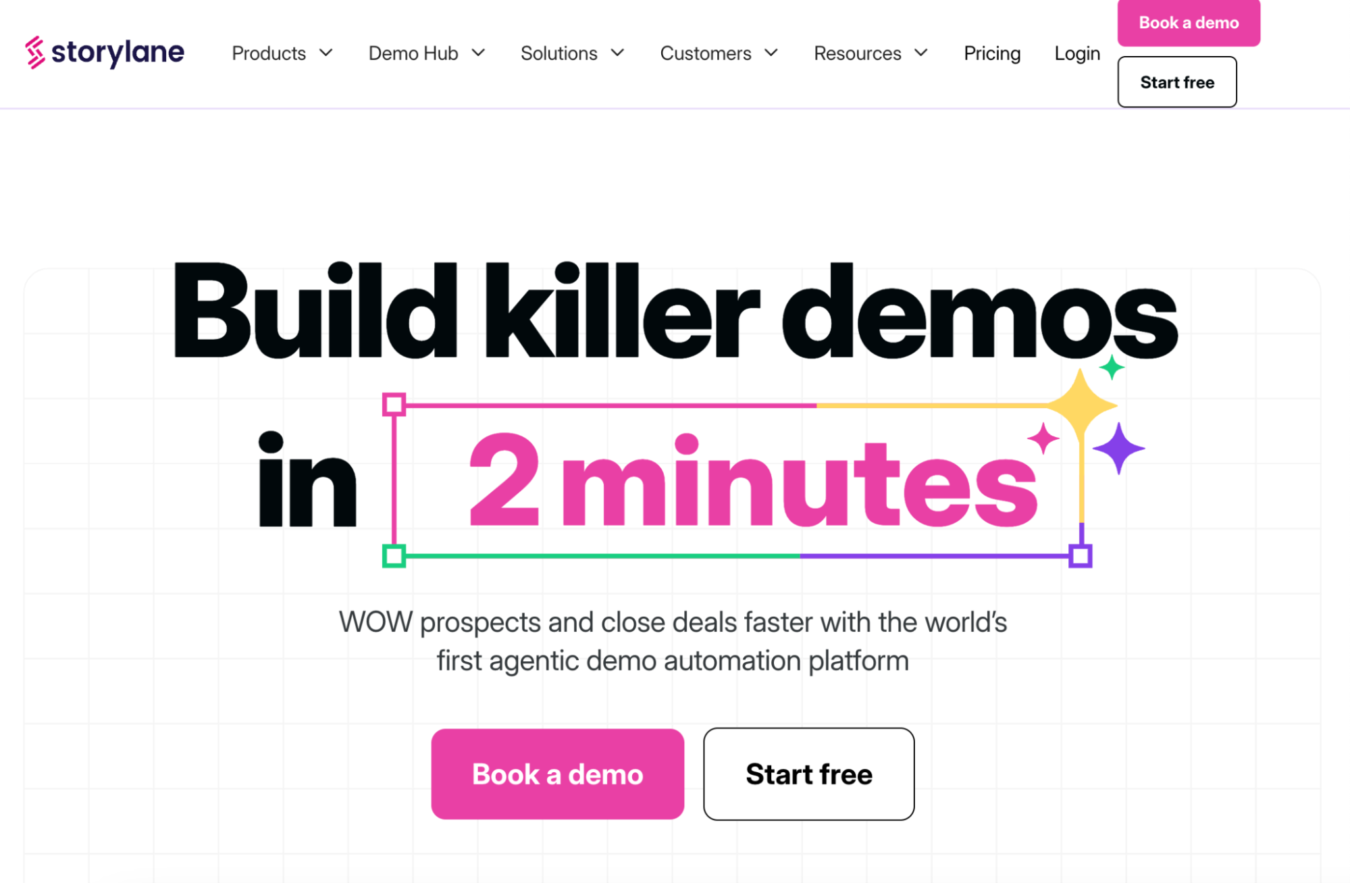
Storylane makes creating guided product demos simple. These demos help prospects navigate interactive walkthroughs that you’ve tailored to their needs.
Storylane’s quick 5-step creation process and AI assistance make creating demos easy and don’t require your team to have extensive coding or design knowledge.
Walnut
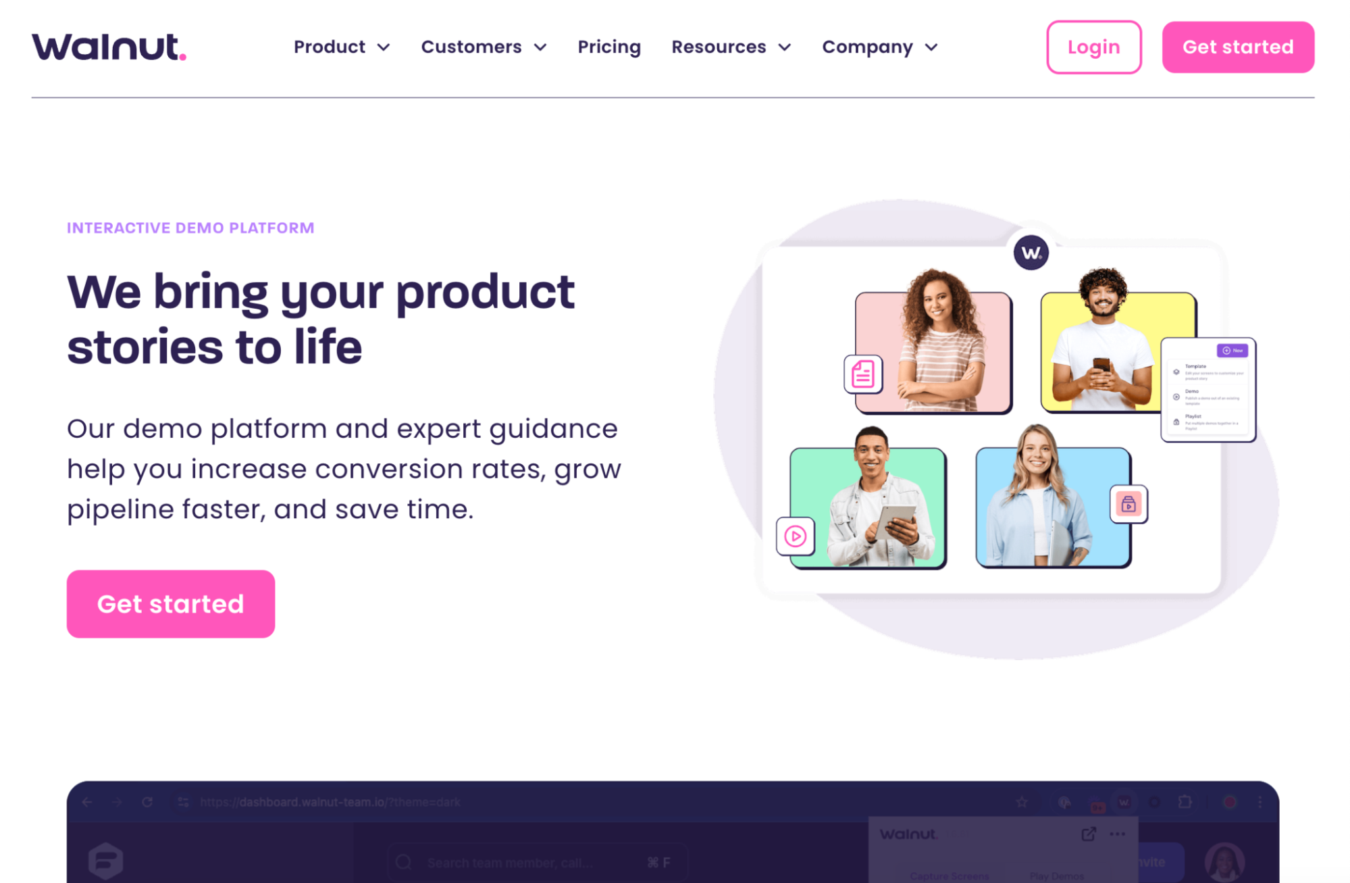
Walnut facilitates no-code demo creation, offering full customization and real-time collaboration to enhance the customer experience.
Walnut also integrates with several platforms, making sharing demos hassle-free.
Demostack
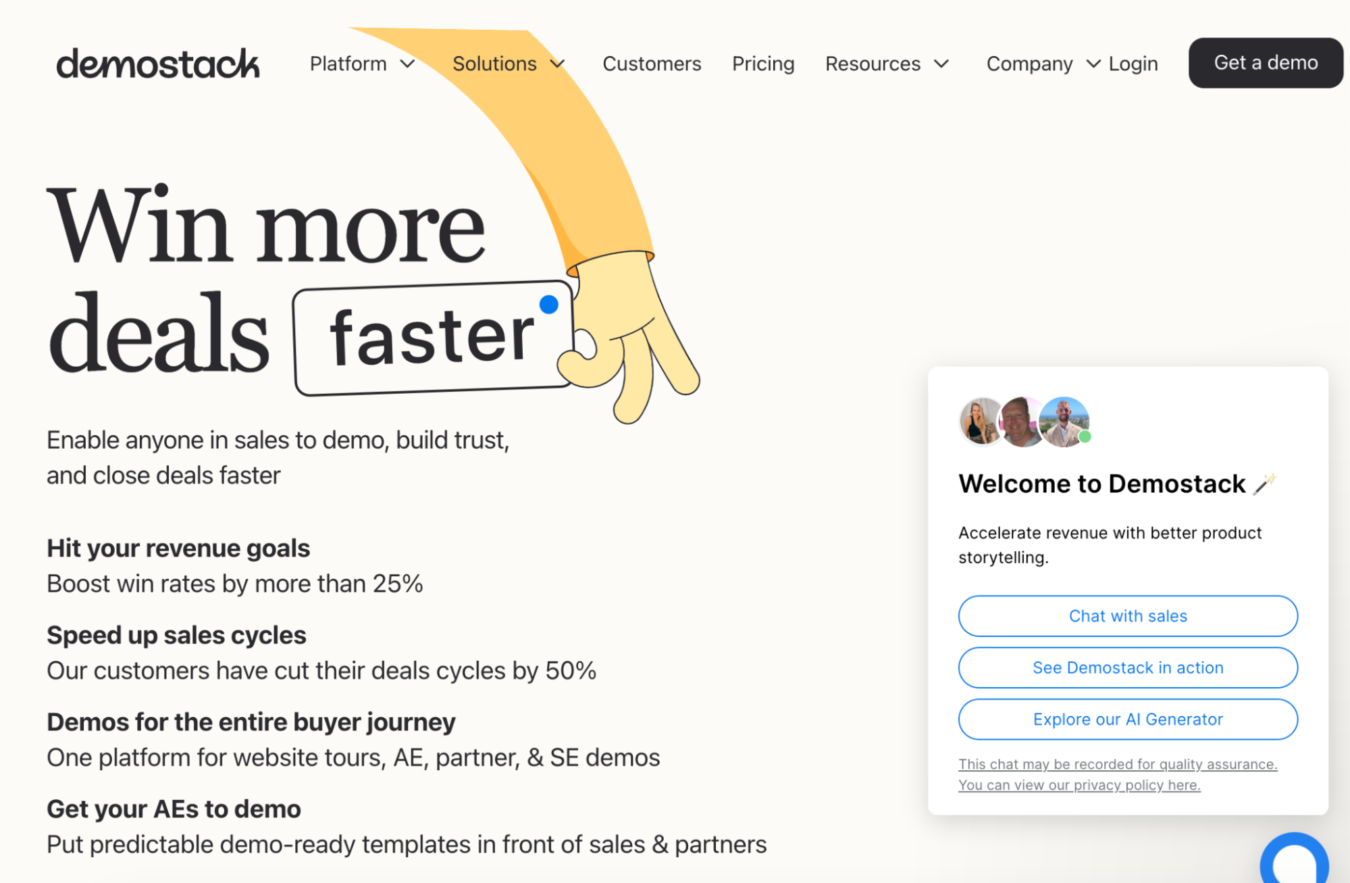
Demostack delivers interactive, professional-grade demos that replicate live environments without backend dependencies.
Demostack focuses on delivering you meaningful analytics to help you create and distribute more effective demos.
Inbound Conversion & Scheduling
Streamlining scheduling and conversions minimizes friction in the buyer’s journey.
Chili Piper
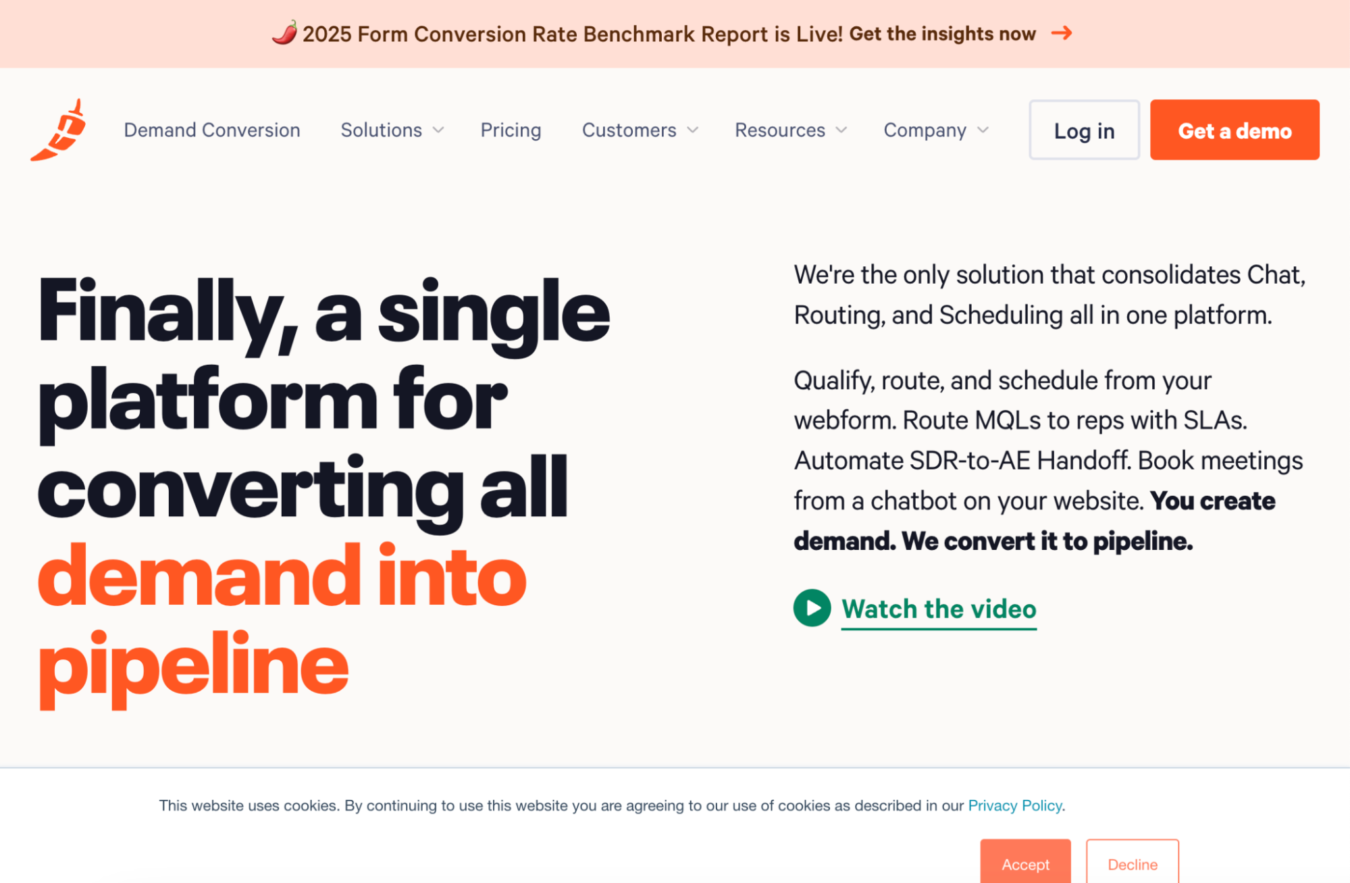
Chili Piper helps you consolidate all communication, including Chat, Routing, and Scheduling to create a seamless channel between sales and marketing.
Calendly

Calendly simplifies appointment scheduling with flexible and user-friendly calendar integrations.
They boast over 100 integrations, making it a valuable tool regardless of what platforms you, your team, and your customers use.
Drift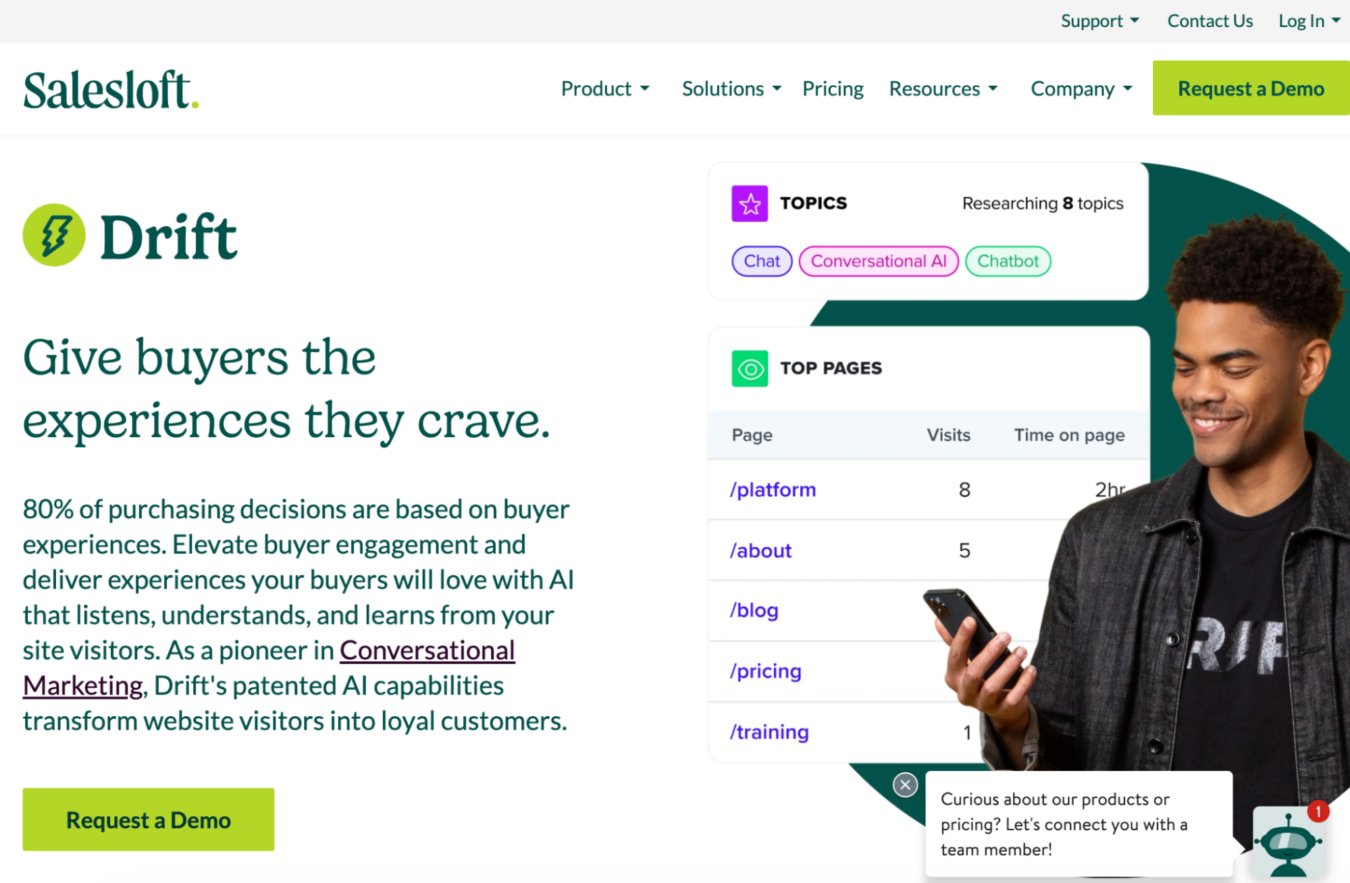
Drift adds a conversational layer to website engagement with AI-powered chatbots for booking meetings and answering queries.
Drift promises personalization with little upkeep, making it a great hands-off solution to chats.
Website Visitor Identification & Analytics
Identifying website visitors’ data helps target and nurture leads effectively.
Leadfeeder
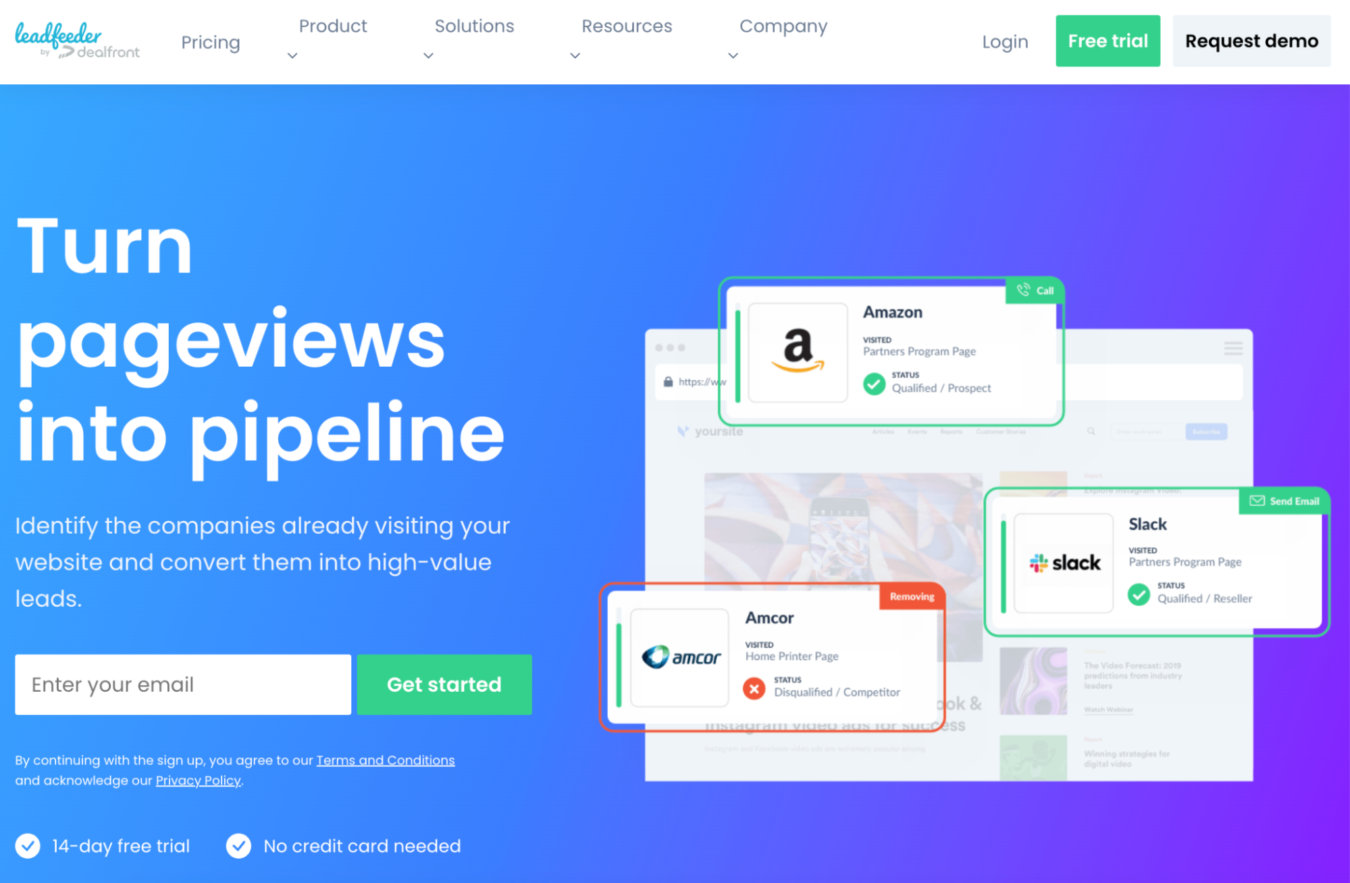
Leadfeeder tracks website visitors, uncovering valuable company and behavioral insights.
Their thorough 4-step tracking process helps you connect with the most valuable leads. Leadfeeder integrates with your CRM, making the process smooth and easy.
Albacross
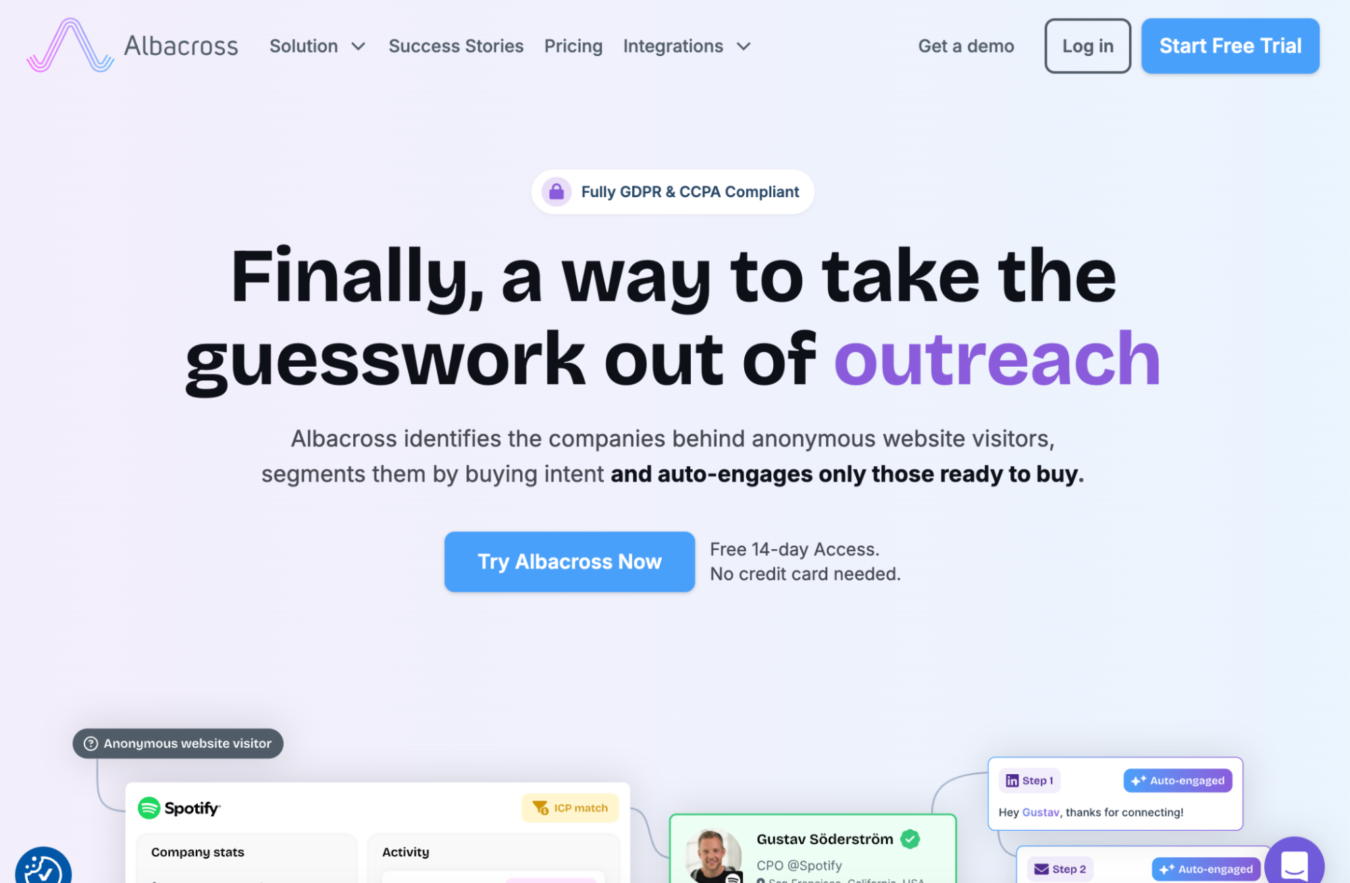
Albacross identifies anonymous traffic and enriches visitor data for sales and marketing teams.
Their fully automated process only alerts you when leads actually respond, reducing the work of having to sift through lots of data.
Clearbit
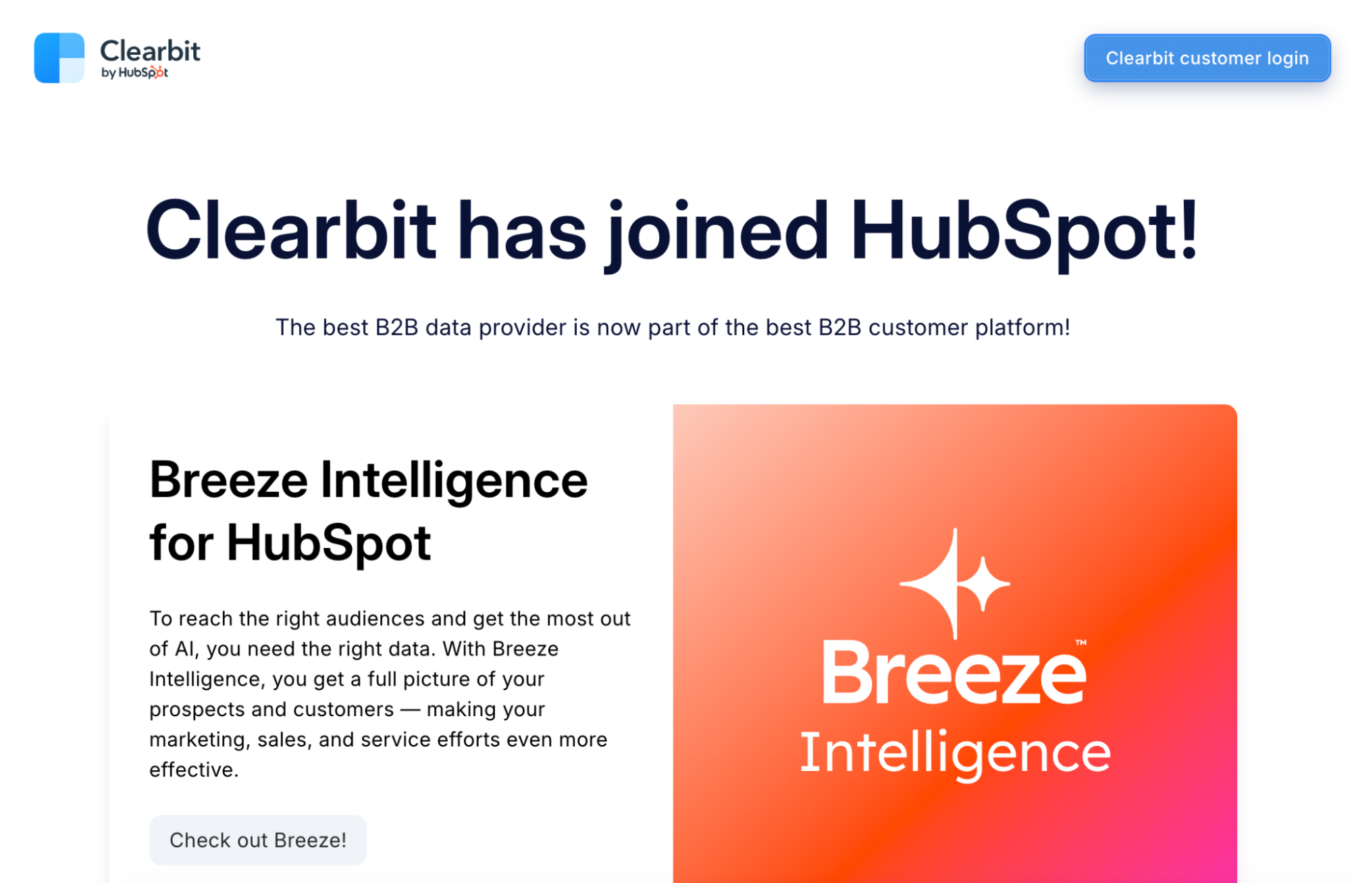
Clearbit integrates real-time data enrichment to provide actionable insights for audience targeting.
They offer dynamic form shortening to reduce friction in the lead-gathering process.
Social Media Management & Advocacy
Managing social efforts helps expand reach and engage audiences proactively. Marketing automation plays a crucial role in managing these efforts by streamlining tasks, tracking customer behaviors, and increasing the efficiency of targeted campaigns.
Oktopost
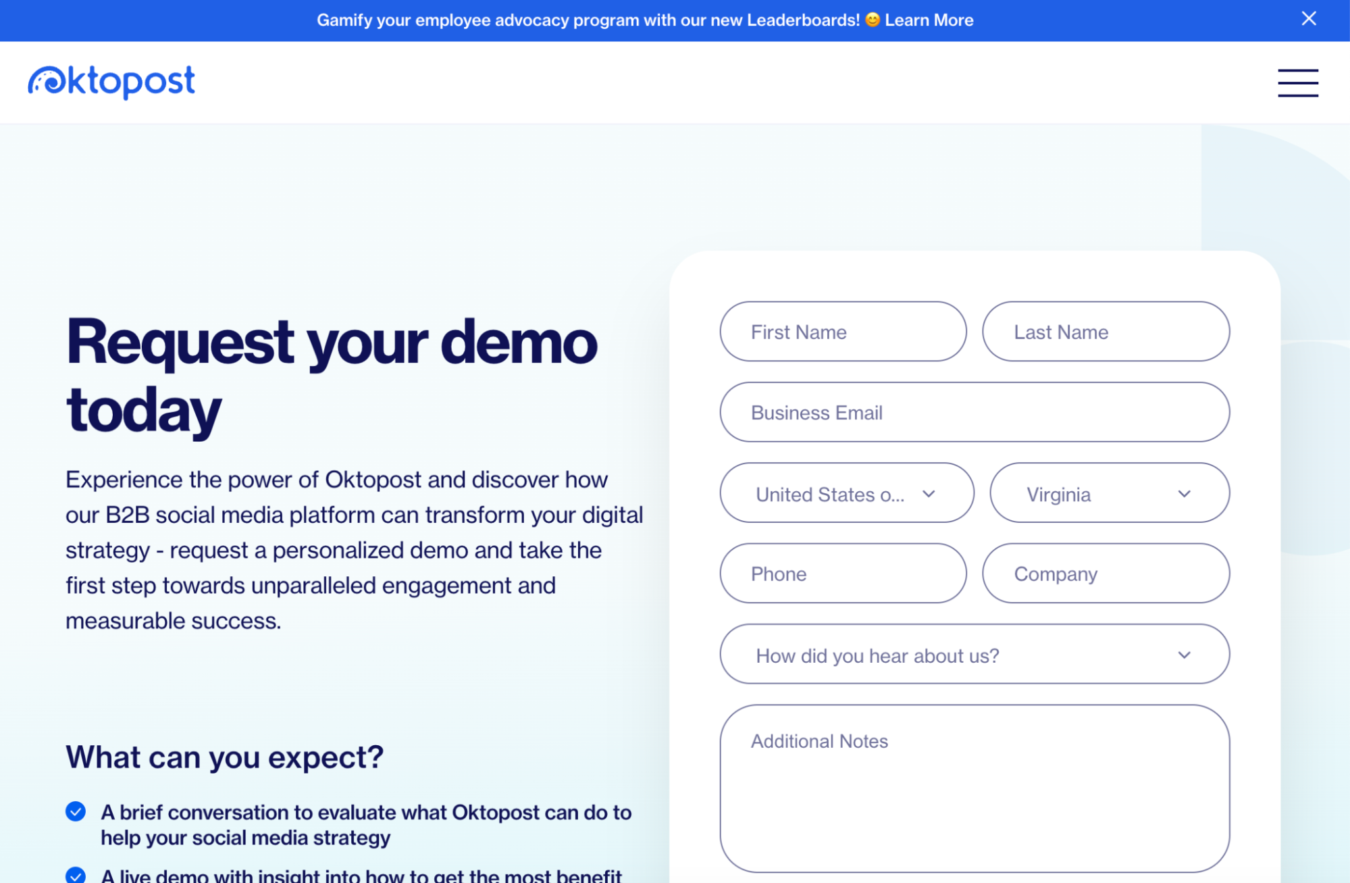
Oktopost caters to B2B marketers, combining social media scheduling, advocacy, and analytics.
Since it was created for B2B companies, Oktopost prioritizes platforms that B2B marketers use the most—specifically LinkedIn.
Hootsuite
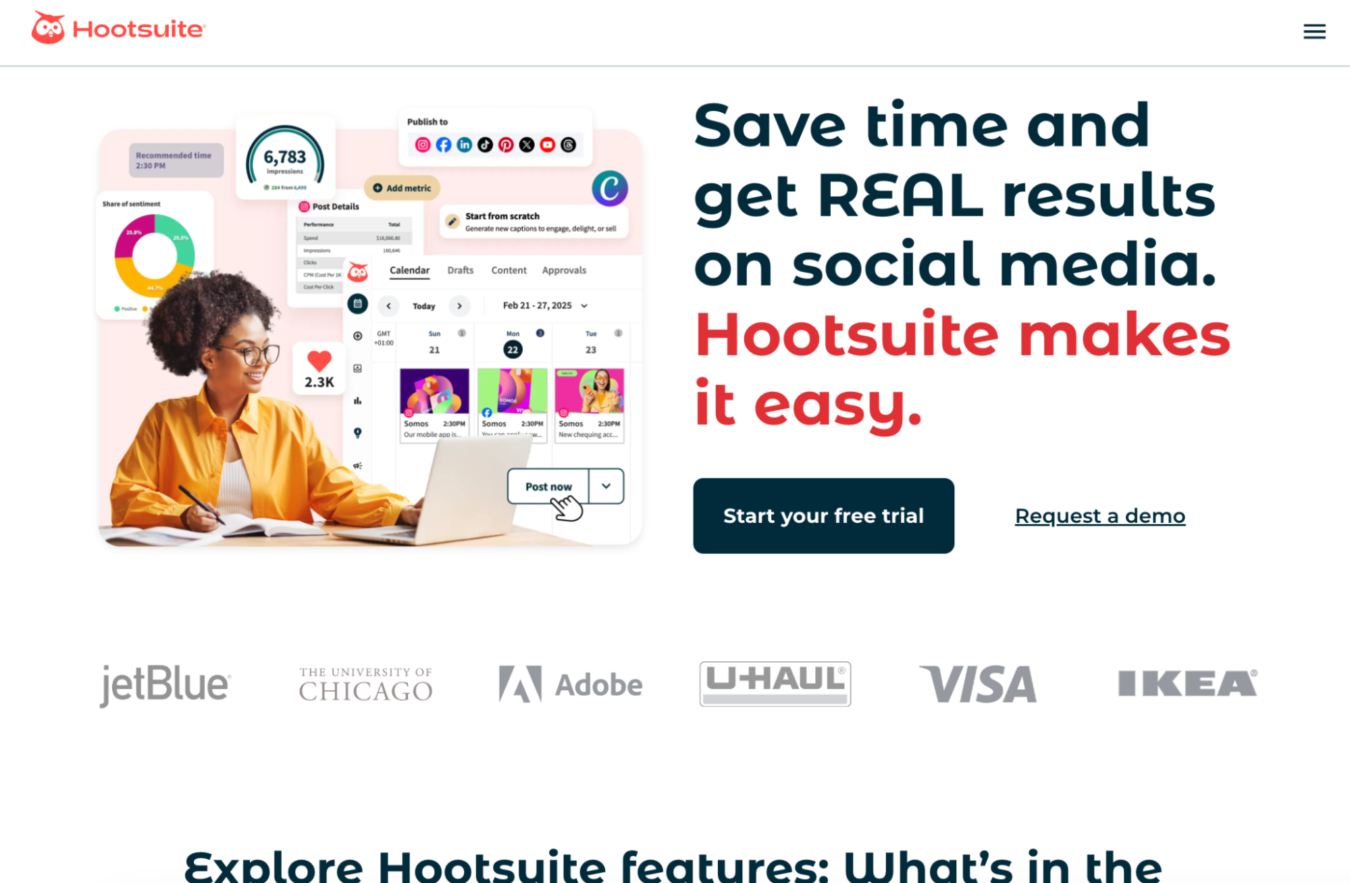
Hootsuite offers comprehensive scheduling, monitoring, and analytics for multi-platform social campaigns.
Hootsuite promises to reduce your social media workload by 80%, using their chatbot features.
Sprout Social
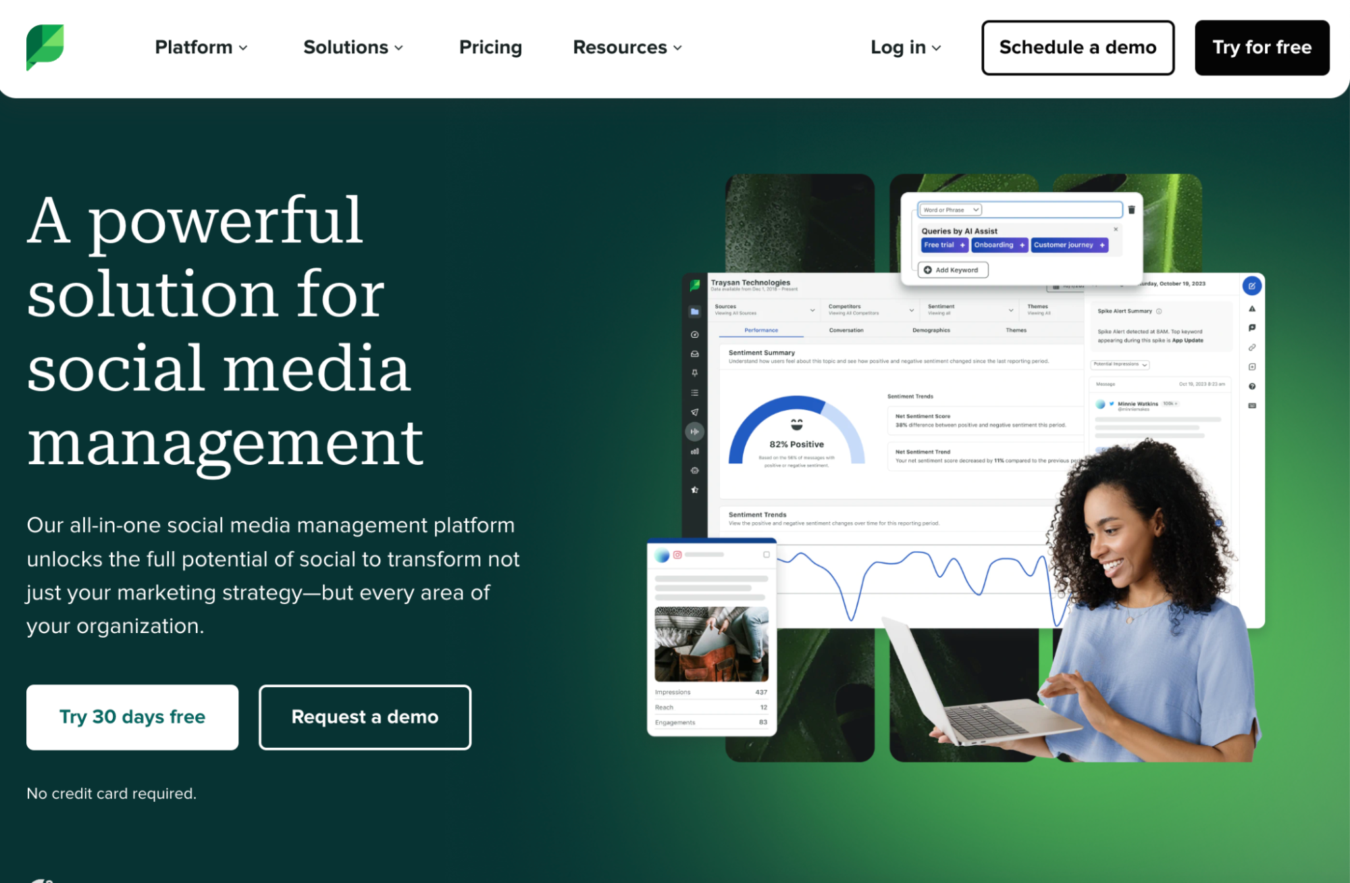
Sprout Social highlights engagement trends, automating publishing and delivering in-depth social analytics.
Sprout Social reduces your workload with its AI-powered message prioritization feature, floating your most important messages to the top of your inbox.
Direct Mail & Gifting
Personalized gifts and direct mail campaigns create memorable customer touchpoints.
Sendoso
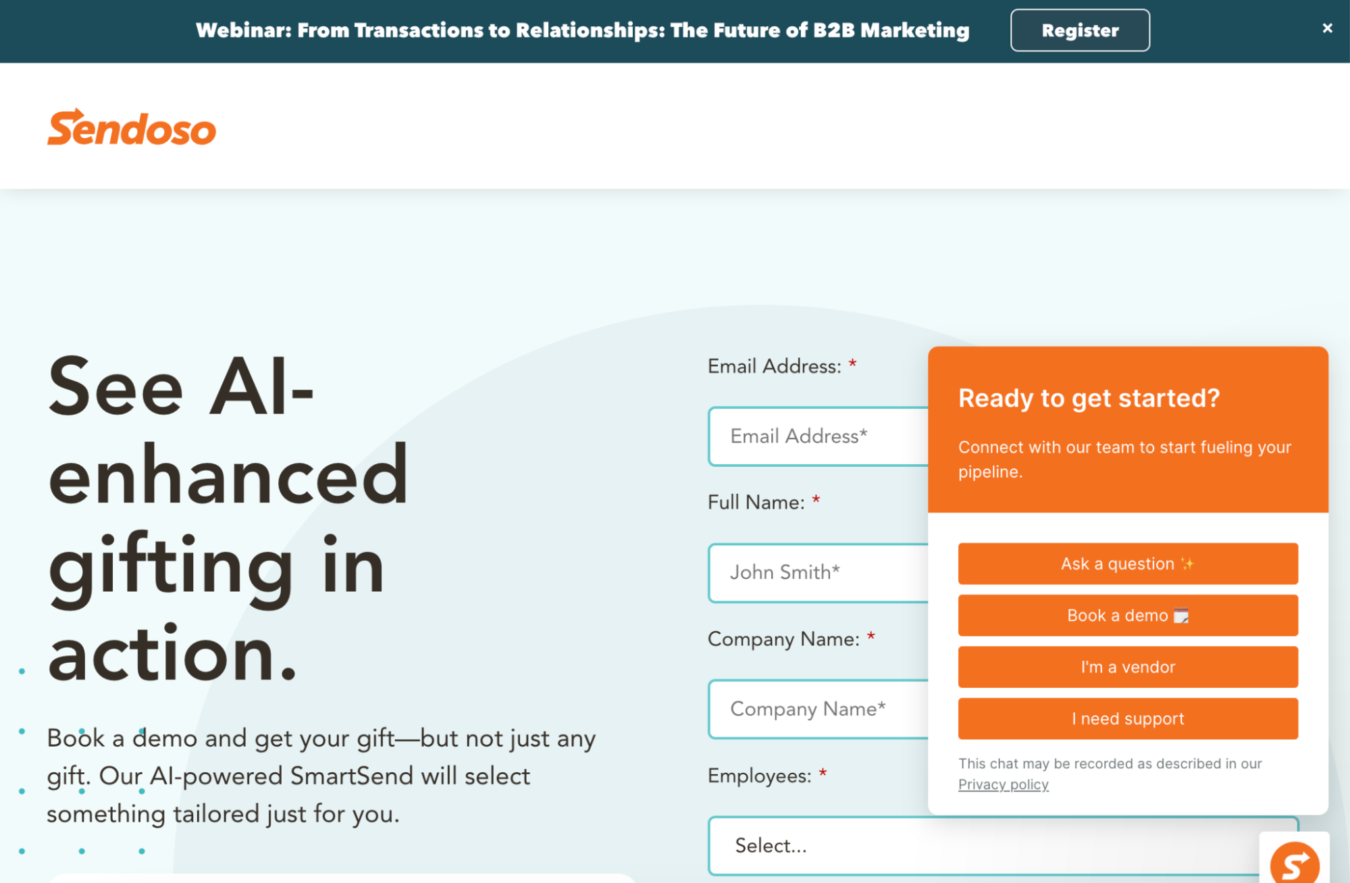
Sendoso helps streamline corporate gifting and direct mail campaigns with robust tracking features.
A unique feature of Sendoso is that they don’t outsource to third-party warehouses—they handle every aspect of the gifting process for you.
Alyce
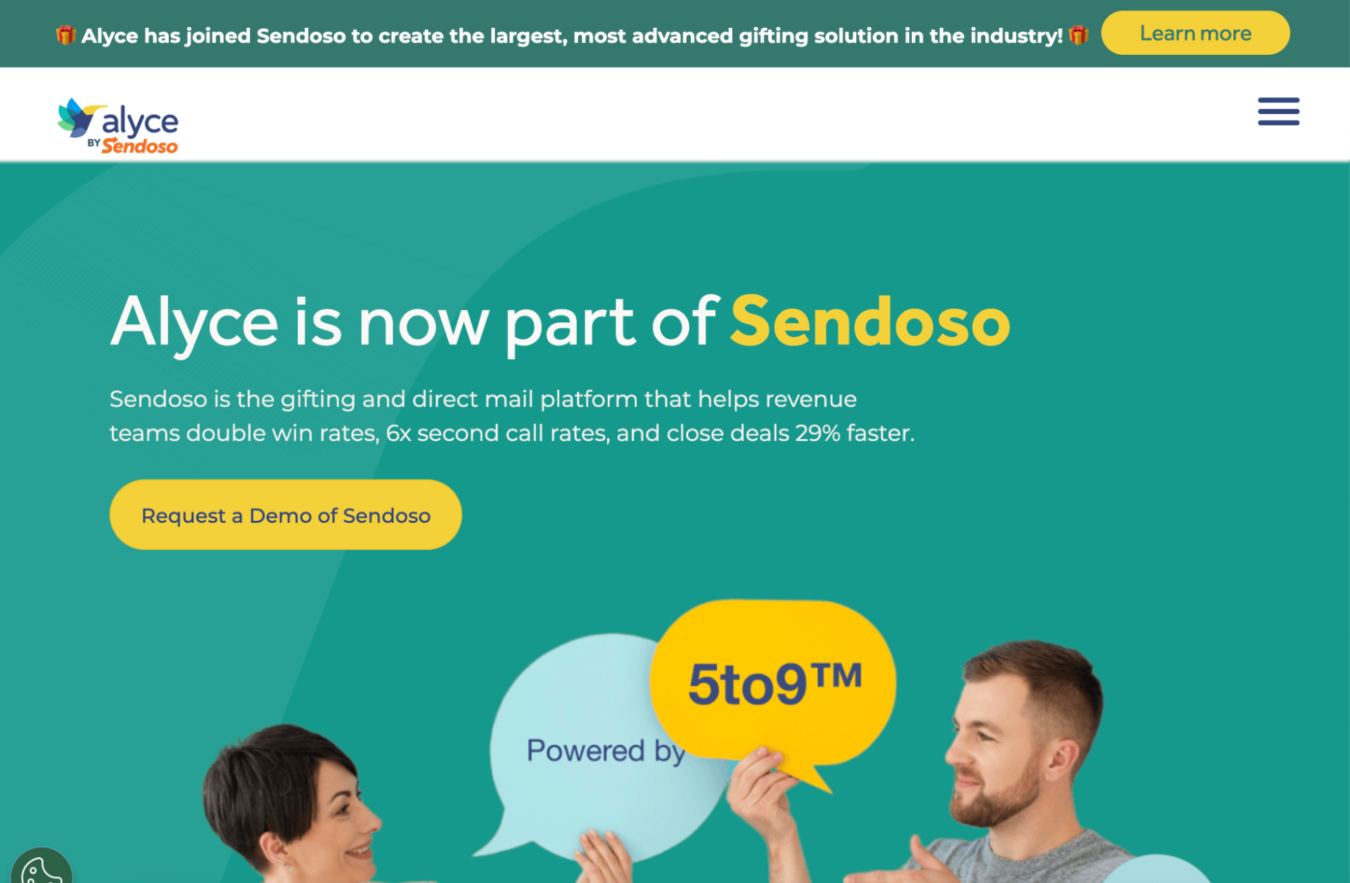
Alyce focuses on personal gifting, allowing businesses to send tailored options matching recipient preferences.
Alyce has a high success rate, helping some clients 5x their ROI and saving others hours of work on outreach campaigns.
Postal.io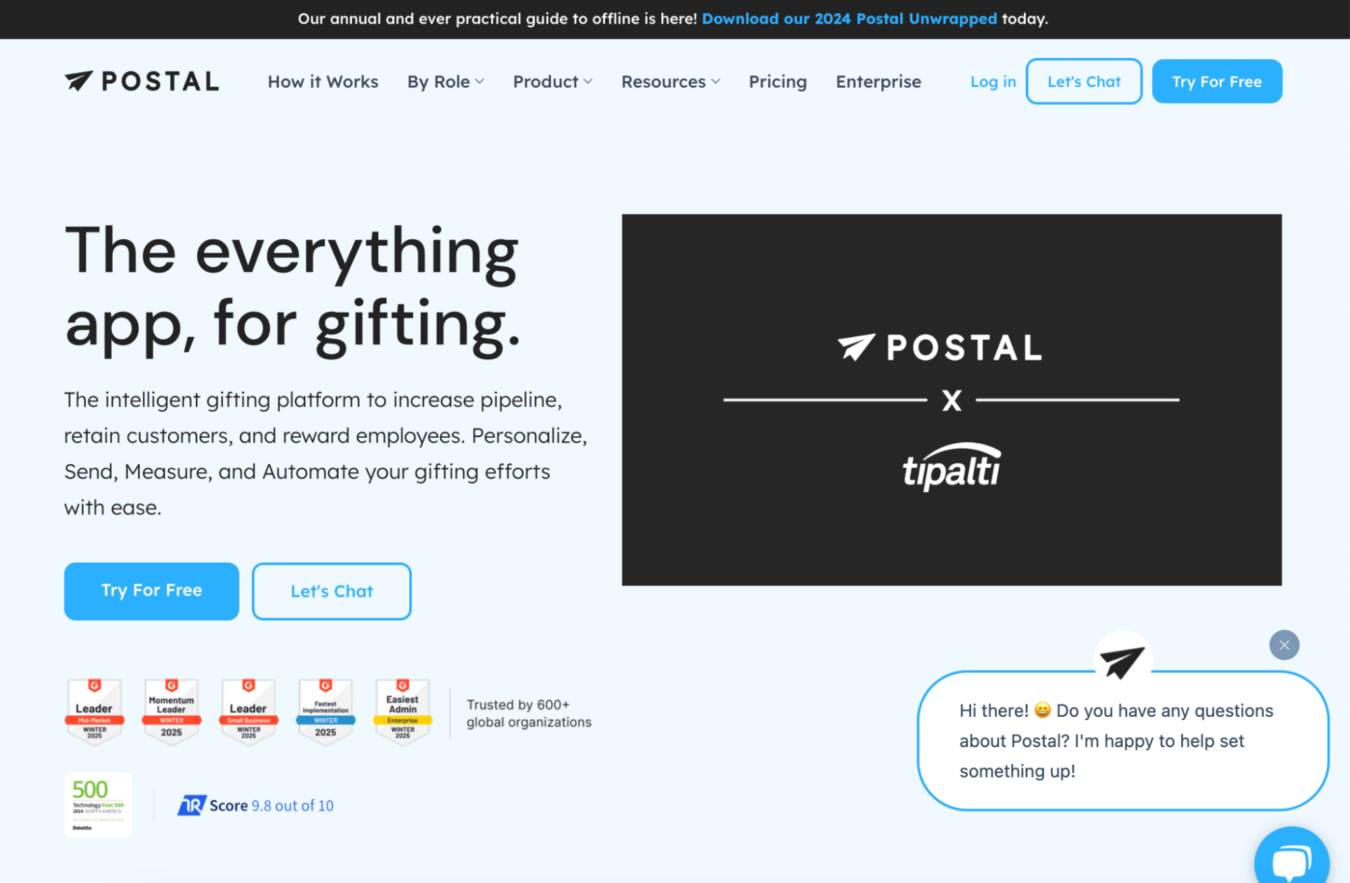
Postal.io helps you automate and scale gifting campaigns by integrating with various demand generation platforms.
With Postal.io, you can create custom triggers to send gifts to recipients if they complete a specific desired action, like signing up or increasing their subscription.
Intent Data & Intelligence
Understanding purchase intent improves targeting precision and resource allocation.
Intentsify

Intentsify aggregates intent signals, identifying high-potential accounts based on activity patterns.
Intentsify’s managed service model helps you scale your marketing efforts without adding additional platforms to your tech stack.
ZoomInfo
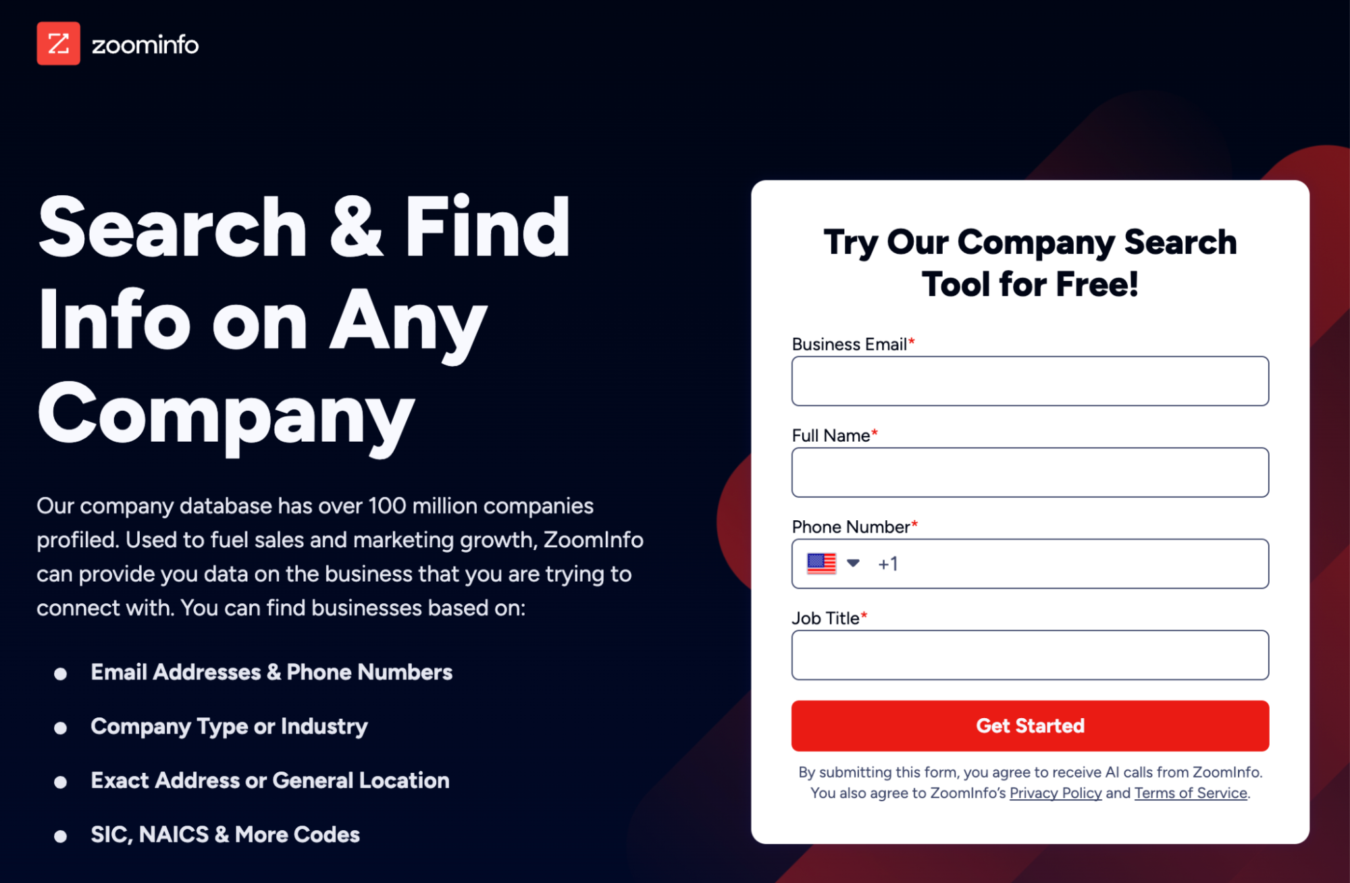
ZoomInfo delivers intent-driven buyer insights, integrating seamlessly with sales workflows. Their large database will support your search for businesses to connect with.
Bombora
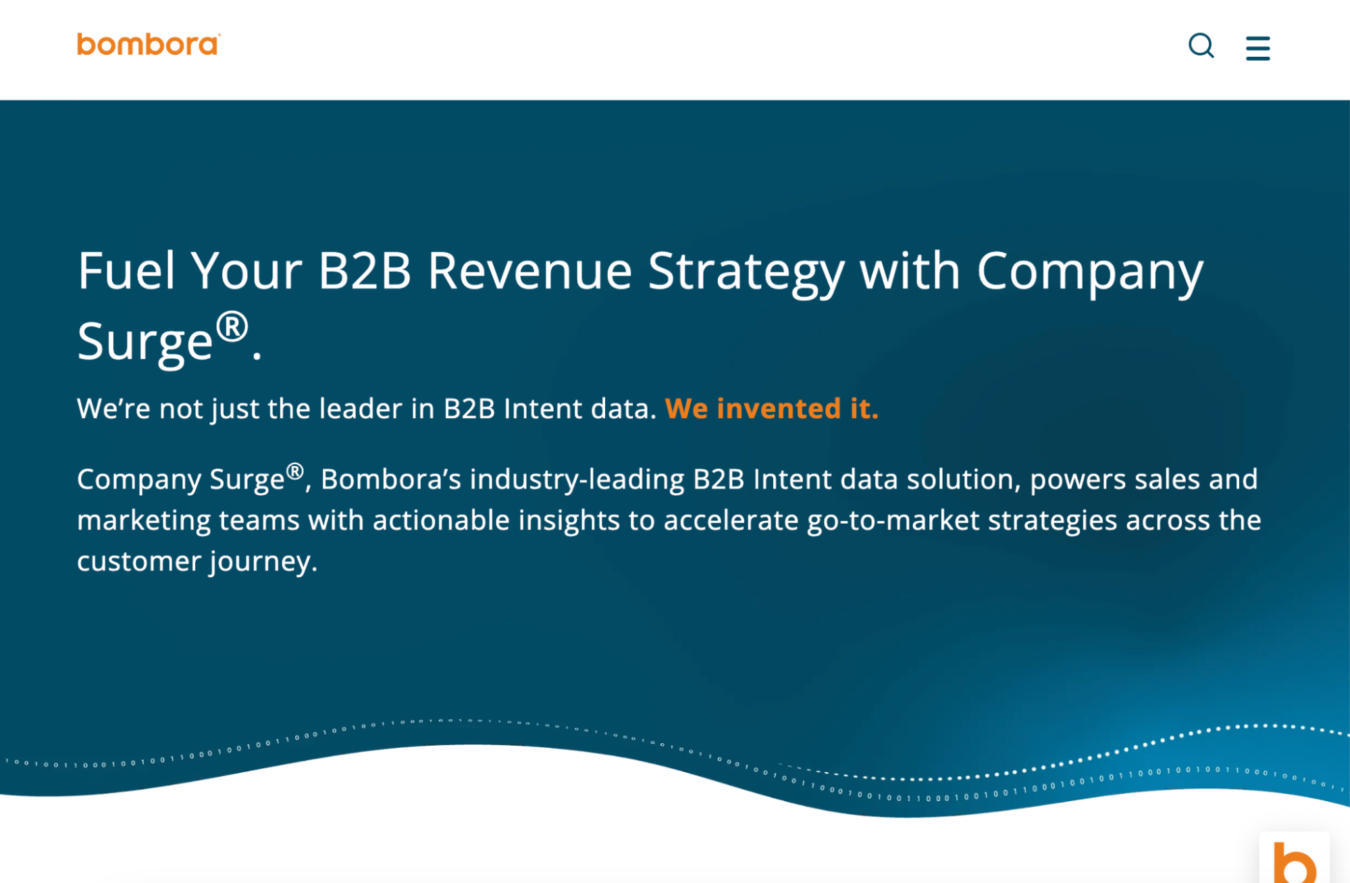
Bombora captures intent data from B2B sources, prioritizing prospects actively researching solutions.
This feature makes your search easier, identifying prospects who already want your solution.
Data & Contact Intelligence
Collecting accurate lead data and understanding your target audience makes your outreach more effective and increases your conversion rates.
Cognism

Cognism provides GDPR-compliant contact data enriched with intent signals and segmentation options.
Cognism prioritizes getting you fresh, up-to-date data to help you stay ahead of the competition.
Seamless.ai
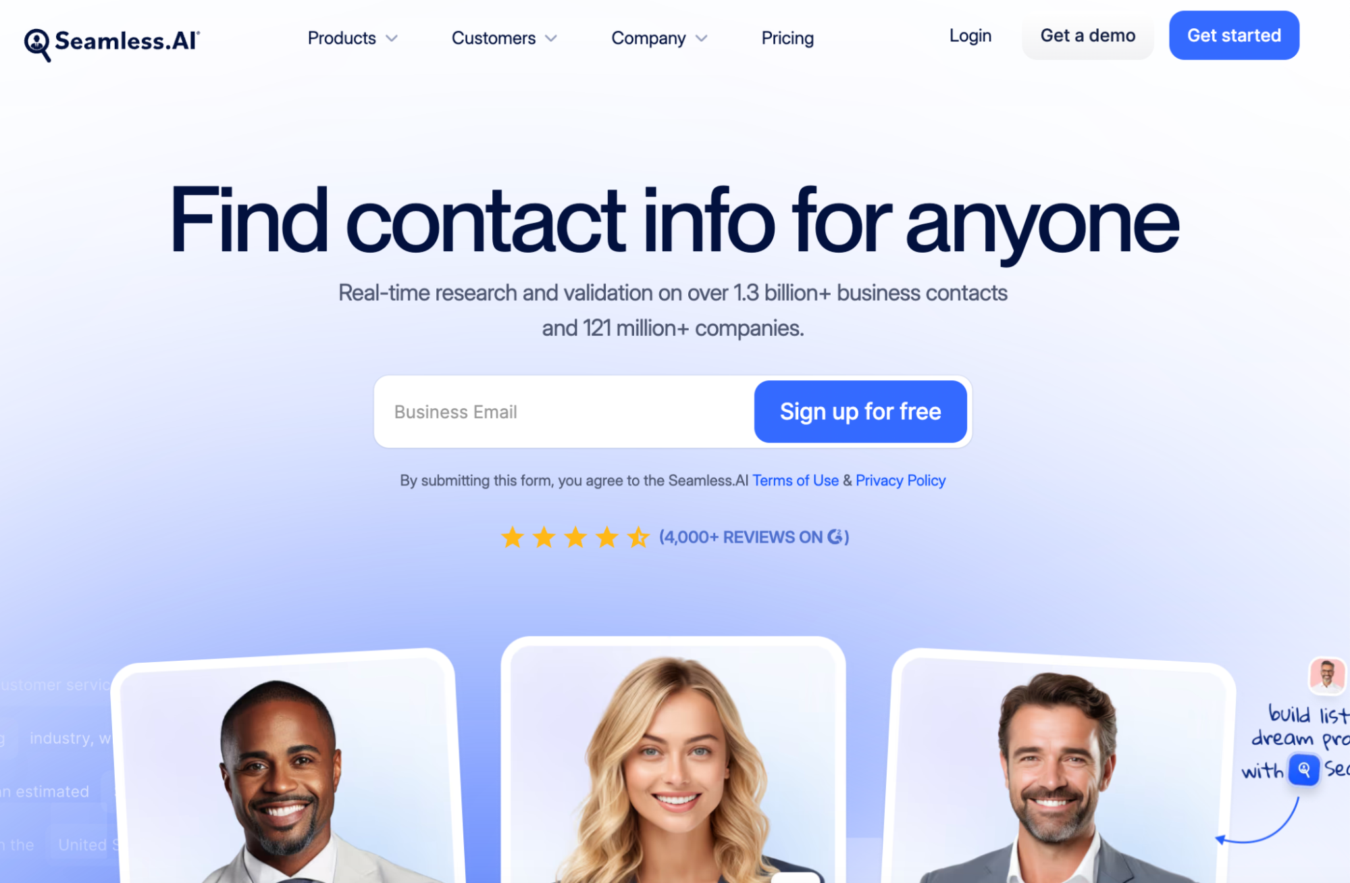
Seamless.ai finds accurate contact data and integrates it directly into CRM platforms for faster targeting.
This tool tracks specific behaviors, like job changes, to help you keep connecting with your most valuable customers.
UpLead

UpLead verifies data in real time to secure valid contact details for targeted business engagements.
UpLead provides a less expensive solution and offers 24/7 human support, making it a great option for smaller B2B businesses.
Sales Engagement Platforms
Automating and personalizing sales outreach boosts engagement and helps the sales team close deals faster.
Salesloft
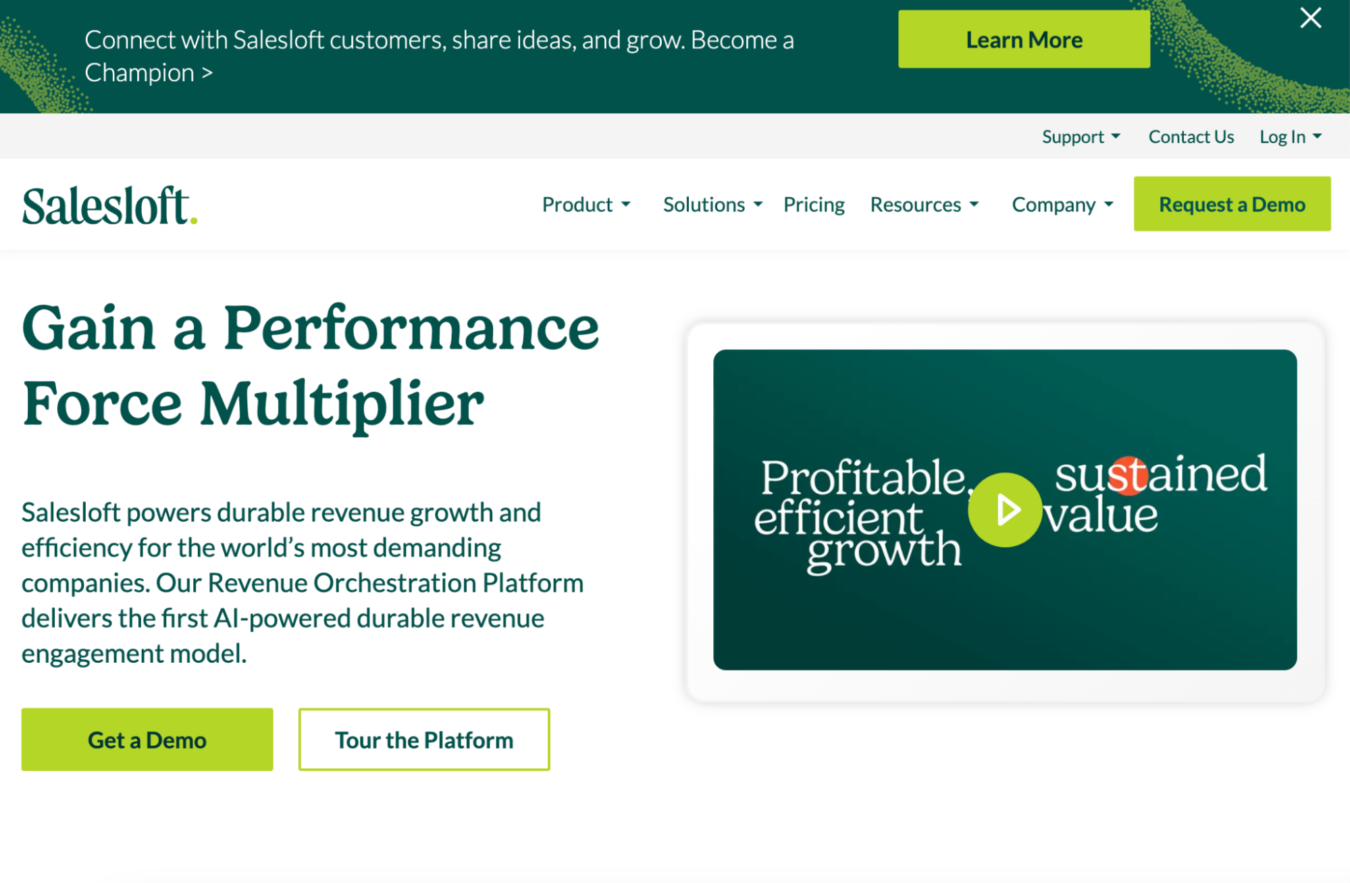
Salesloft creates multi-channel engagement by automating email cadences and call tracking.
Their Rhythm tool, an AI-powered signal-to-action engine, gives your team their next steps each time, helping you perfect your outreach timing.
Outreach

Outreach combines AI insights with sales automation to scale pipeline generation effectively.
Their Kaia conversation intelligence tool will help your team create effective messaging in real-time, making it easier to make your pitch.
Groove by Clari
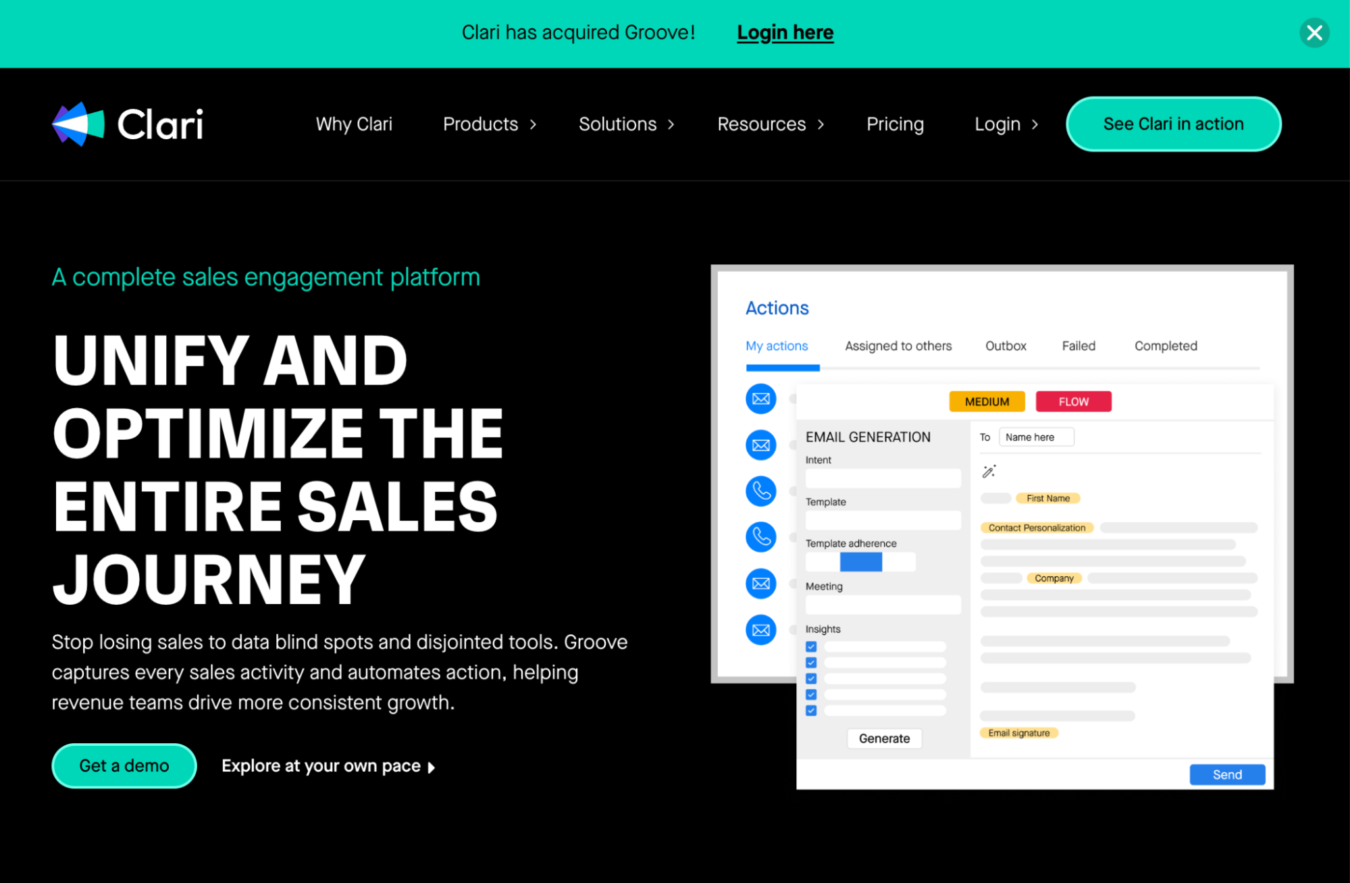
Groove streamlines sales workflows with CRM integrations, providing analytics for activity tracking and optimization.
Groove helps you increase your revenue, offering tools like the Revenue Leak Assessment to make sure you’re making the most of your efforts.
Best Practices & Optimization
Optimizing demand generation strategies requires you to select, integrate, and align tools effectively. Employ systematic approaches to choose and organize your tools so you can achieve your marketing objectives.
Selecting & Integrating Tools
Evaluate the tool’s compatibility with your business objectives to simplify the integration process. Assess how each solution complements existing strategies and addresses gaps, ensuring smoother implementation. By prioritizing ease of use and agility, your team can quickly adopt tools without disrupting your operations. Post-integration, regular audits verify performance alignment with demand generation goals.
Criteria for Tool Selection
Focus on scalability, analytics capabilities, and customer experience to make sure you select the most effective tool for your business. Prioritize tools that grow alongside organizational needs.
Advanced analytics solutions facilitate actionable insights by tracking intent and engagement metrics. To enhance user interaction, identify platforms with personalization features to optimize visitor experiences. Security protocols and compliance certifications are essential elements in the decision-making process.
Ensuring Tech Stack Harmony
Maintaining compatibility across tools eliminates data silos and optimizes cross-functional collaboration. Align your sales, marketing, and customer success teams by using platforms that synchronize data sharing.
A unified tech stack maximizes ROI, where tools complement rather than compete with one another. Implementing APIs or middleware increases connectivity between software, such as integrating Slack with demand generation platforms for real-time communication. Testing interoperability between tools before adoption prevents future disruptions in any workflows.
Team Training & Adoption
It’s vital to train your team on the new tools in order to maximize their value. A well-trained team makes the integration process seamless and optimizes the tools’ potential.
Training Strategies
Comprehensive training strategies help teams to use demand generation tools effectively. Follow these steps when implementing a new tool:
- Start with tool-specific training sessions that focus on key functions, such as data analysis, customer segmentation, and campaign monitoring.
- Use structured resources like documentation, video tutorials, and interactive demos to reinforce learning.
- Provide ongoing learning opportunities through workshops or webinars to address advanced features and new updates.
- Encourage cross-departmental knowledge sharing to align teams on tool usage, particularly between marketing and sales.
- Assign tool experts within teams for peer support, ensuring quick resolution of queries and maintaining momentum.
Following these best practices will create a smoother tool integration.
Common Implementation Pitfalls
Ignoring common pitfalls in implementation can hinder adoption and make the tool less effective. Lack of upfront planning leads to unclear objectives and poor integration into workflows. Avoid this pitfall by establishing clear use cases and defining metrics for success before rollout.
Another issue arises when teams receive insufficient training or are overwhelmed with excessive features. This issue can result in underutilization or reliance on outdated processes. Introducing tools gradually and aligning features with immediate team priorities can mitigate this challenge.
Finally, failure to collect feedback post-implementation stalls improvement efforts. Regularly gather team insights to refine training strategies and enhance tool performance over time.
Measuring Success
Take a structured approach when evaluating how effective your demand generation tool is. By focusing on measurable KPIs and iterative improvements, you can help your strategies align with business goals.
Key Demand Generation KPIs
Tracking key performance indicators (KPIs) helps measure the success of demand generation initiatives. These KPIs guide our efforts towards driving awareness and engagement:
- Marketing Qualified Leads (MQLs): The number of leads that meet predefined criteria based on engagement levels, such as content downloads or event participation.
- Sales Qualified Leads (SQLs): The count of leads passed to sales teams after meeting readiness criteria for follow-up.
- Customer Acquisition Cost (CAC): The total cost of acquiring new customers across campaigns, helping us optimize budget allocation.
- Conversion Rate: The percentage of users converting from one engagement stage to the next, such as moving from MQLs to SQLs.
- Content Performance Analytics: Metrics like time spent on page, bounce rates, and downloads reveal content effectiveness.
By aligning these KPIs with objectives, you can refine your campaigns to sustain success.
Continuous Testing & Improvement
Test your demand generation tools to deliver optimal results across campaigns. A/B testing sheds light on effective variations, such as subject lines, CTAs, or landing pages. For instance, testing two versions of an email campaign can help identify formats with higher click-through rates.
Analyzing real-time data from tools like Google Analytics can help you identify gaps and adapt strategies quickly. Regular audits of performance outcomes will help you identify underperforming areas while reinforcing tactics that work. Iterating based on insights ensures improved engagement across all demand generation stages.
Grow Your Business with Demand Generation Tools
Demand generation tools have become indispensable for businesses aiming to thrive in competitive markets. By leveraging the right tools and strategies, we can create meaningful connections with our audience, streamline processes, and drive sustainable growth.
The key lies in selecting tools that align with your goals, ensuring seamless integration, and fostering team adoption through proper training. With a data-driven approach and continuous optimization, you can unlock the full potential of demand generation and position your brand for long-term success.
What you should do now
Whenever you’re ready…here are 4 ways we can help you grow your B2B software or technology business:
- Claim your Free Marketing Plan. If you’d like to work with us to turn your website into your best demo and trial acquisition platform, claim your FREE Marketing Plan. One of our growth experts will understand your current demand generation situation, and then suggest practical digital marketing strategies to hit your pipeline targets with certainty and predictability.
- If you’d like to learn the exact demand strategies we use for free, go to our blog or visit our resources section, where you can download guides, calculators, and templates we use for our most successful clients.
- If you’d like to work with other experts on our team or learn why we have off the charts team member satisfaction score, then see our Careers page.
- If you know another marketer who’d enjoy reading this page, share it with them via email, Linkedin, Twitter, or Facebook.